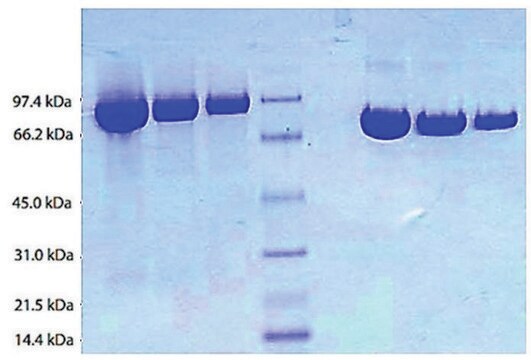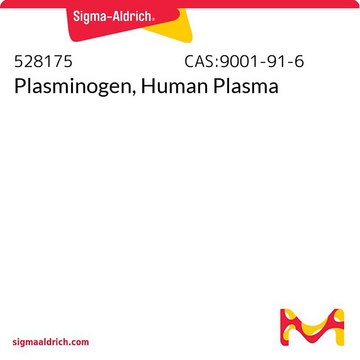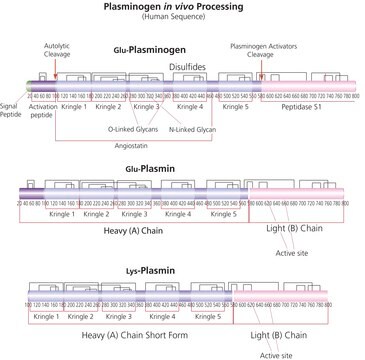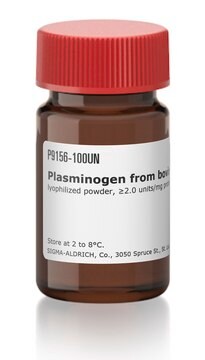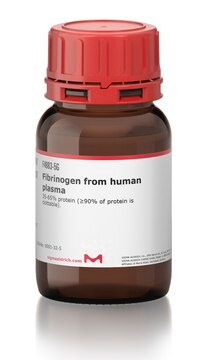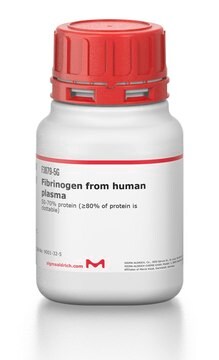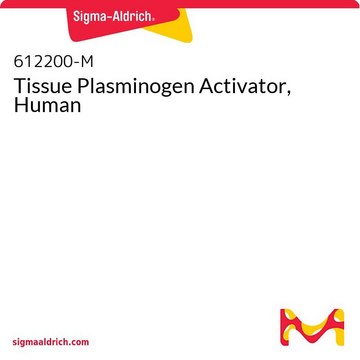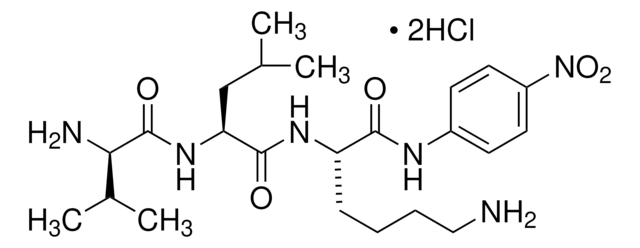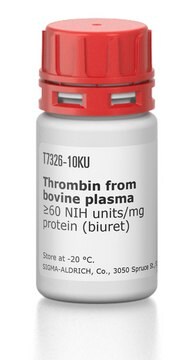10874477001
Roche
Plasminogen
from human serum
Synonym(s):
plasminogen
About This Item
Recommended Products
biological source
human serum
Quality Level
form
lyophilized
specific activity
~11 units/mg protein (activated with streptokinase at 37 °C and pH 7.4 with Chromozym PL as the substrate.)
mol wt
90-94 kDa
packaging
pkg of 20 U
manufacturer/tradename
Roche
technique(s)
activity assay: suitable
application(s)
life science and biopharma
shipped in
wet ice
General description
Application
Features and Benefits
Lyophilizate, stabilized with bovine serum albumin.
Quality
Sequence
Preparation Note
Working solution: Solvent is recommended in 20 mM sodium phosphate buffer, pH 7.5, 100 mM NaCl.
Storage conditions (working solution): -15 to -25 °C
A solution in 20 mM sodium phosphate buffer, pH ca. 7.5, 100 mM NaCl is stable for several months without loss of activity when stored at -15 to -25 °C.
Note:
Plasminogen is susceptible to autolysis, which may result in activation. Contact with the skin or other contamination (e.g., by microorganisms), is therefore to be avoided.
Storage and Stability
Other Notes
Signal Word
Warning
Hazard Statements
Precautionary Statements
Hazard Classifications
STOT RE 2
Storage Class Code
11 - Combustible Solids
WGK
WGK 2
Flash Point(F)
does not flash
Flash Point(C)
does not flash
Certificates of Analysis (COA)
Search for Certificates of Analysis (COA) by entering the products Lot/Batch Number. Lot and Batch Numbers can be found on a product’s label following the words ‘Lot’ or ‘Batch’.
Already Own This Product?
Find documentation for the products that you have recently purchased in the Document Library.
Customers Also Viewed
Our team of scientists has experience in all areas of research including Life Science, Material Science, Chemical Synthesis, Chromatography, Analytical and many others.
Contact Technical Service